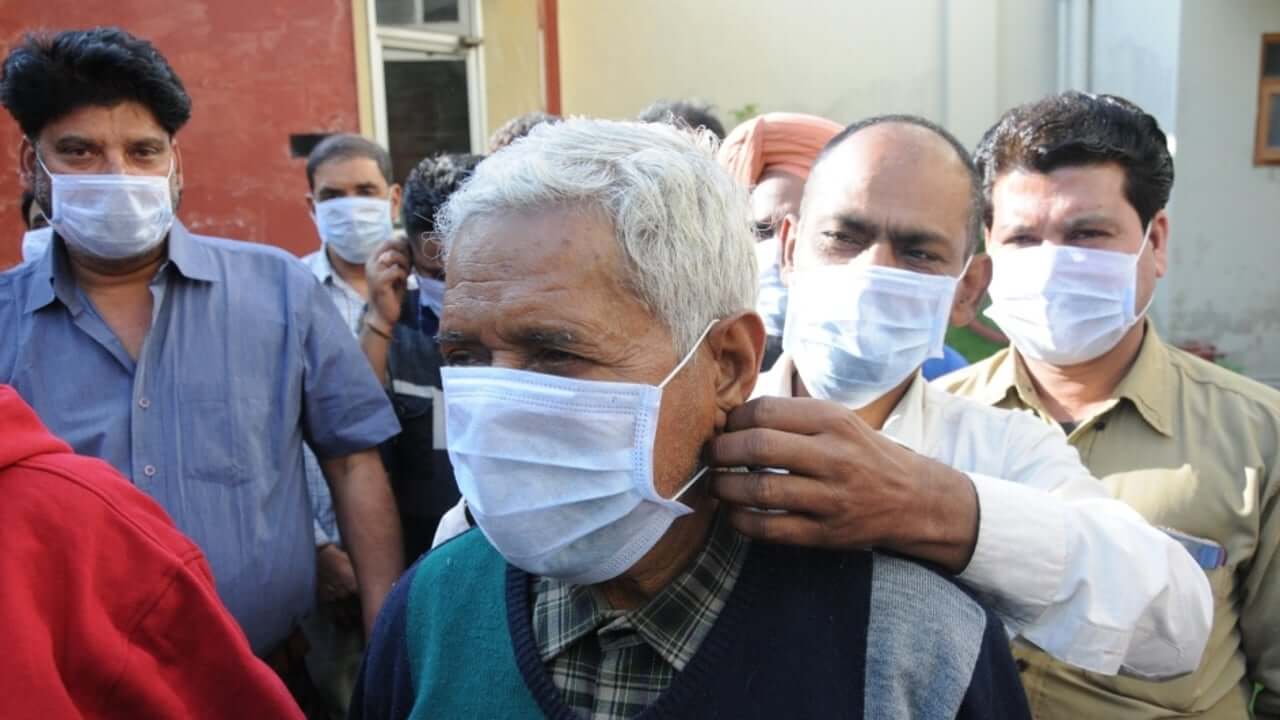Navodita cautions us that we are dealing with an extreme fat-tailed process owing to an increased connectivity, which increases the spreading in a nonlinear way. An exclusive for Different Truths.
The Novel Coronavirus emerging out of Wuhan, China has been identified as a deadly strain that is also highly contagious. The response by China to date has included travel restrictions on tens of millions across several major cities in an effort to slow its spread. Despite this, positively identified cases have already been detected in many countries spanning the globe and there are doubts such containment would be effective. This note outlines some principles to bear in relation to such a process.
The response by China to date has included travel restrictions on tens of millions across several major cities in an effort to slow its spread. Despite this, positively identified cases have already been detected in many countries spanning the globe and there are doubts such containment would be effective.
Clearly, we are dealing with an extreme fat-tailed process owing to an increased connectivity, which increases the spreading in a nonlinear way. Fat tailed processes have special attributes, making conventional risk-management approaches inadequate. The general (non-naive) precautionary principle delineates conditions where actions must be taken to reduce risk of ruin, and traditional cost-benefit analyses must not be used. These are ruin problems where, over time, exposure to tail events leads to a certain eventual extinction. While there is a very high probability for humanity surviving a single such event, over time, there is eventually zero probability of surviving repeated exposures to such events. While repeated risks can be taken by individuals with a limited life expectancy, ruin exposures must never be taken at the systemic and collective level. In technical terms, the precautionary principle applies when traditional statistical averages are invalid because risks are not ergodic.
Naïve Empiricism
Next, we address the problem of naive empiricism in discussions related to this problem.
Historically based estimates of spreading rates for pandemics in general, and for the current one in particular, underestimate the rate of spread because of the rapid increases in transportation connectivity over recent years. This means that expectations of the extent of harm are underestimates both because events are inherently fat tailed, and because the tail is becoming fatter as connectivity increases.

Spreading rate: Historically based estimates of spreading rates for pandemics in general, and for the current one in particular, underestimate the rate of spread because of the rapid increases in transportation connectivity over recent years. This means that expectations of the extent of harm are underestimates both because events are inherently fat tailed, and because the tail is becoming fatter as connectivity increases. Global connectivity is at an all-time high, with China one of the most globally connected societies. Fundamentally, viral contagion events depend on the interaction of agents in physical space, and with the forward-looking uncertainty that novel outbreaks necessarily carry, reducing connectivity temporarily to slow flows of potentially contagious individuals is the only approach that is robust against misestimations in the properties of a virus or other pathogen.
Reproductive ratio: Estimates of the virus’s reproductive ratio-R0—the number of cases one case generates on average over the course of its infectious period in an otherwise uninfected population—are biased downwards. This property comes from fat-tailedness due to individual ‘superspreader’ events. Simply, R0 is estimated from an average which takes longer to converge as it is itself a fat-tailed variable.
Increasingly fatal rapidly spreading emergent pathogens: with increasing transportation we are close to a transition to conditions in which extinction becomes certain both because of rapid spread and because of the selective dominance of increasingly worse pathogens.
Mortality rate: Mortality and morbidity rates are also downward biased, due to the lag between identified cases, deaths and reporting of those deaths. Increasingly fatal rapidly spreading emergent pathogens: with increasing transportation we are close to a transition to conditions in which extinction becomes certain both because of rapid spread and because of the selective dominance of increasingly worse pathogens. The asymmetric uncertainty is that properties of the virus that are uncertain will have substantial impact on whether policies implemented are effective. For instance, whether contagious asymptomatic carriers exist. These uncertainties make it unclear whether measures such as temperature screening at major ports will have the desired impact. Practically all the uncertainty tends to make the problem potentially worse, not better, as these processes are convex to uncertainty.
Fatalism and inaction: Perhaps due to these challenges, a common public health response is fatalistic, accepting what will happen because of a belief that nothing can be done. This response is incorrect as the leverage of correctly selected extraordinary interventions can be very high. Finally, standard individual-scale policy approaches such as isolation, contact tracing and monitoring are rapidly (computationally) overwhelmed in the face of mass infection, and thus also cannot be relied upon to stop a pandemic. Multiscale population approaches including drastically pruning contact networks using collective boundaries and social behavior change, and community self-monitoring, are essential. Together, these observations lead to the necessity of a precautionary approach to current and potential pandemic outbreaks that must include constraining mobility patterns in the early stages of an outbreak, especially when little is known about the true parameters of the pathogen. It will cost something to reduce mobility in the short term, but to fail do so will eventually cost everything—if not from this event, then one in the future.
But policy- and decision-makers must act swiftly and avoid the fallacy that to have an appropriate respect for uncertainty in the face of possible irreversible catastrophe amounts to “paranoia,” or the converse a belief that nothing can be done.
 Outbreaks are inevitable, but an appropriately precautionary response can mitigate systemic risk to the globe at large. But policy- and decision-makers must act swiftly and avoid the fallacy that to have an appropriate respect for uncertainty in the face of possible irreversible catastrophe amounts to “paranoia,” or the converse a belief that nothing can be done.
Outbreaks are inevitable, but an appropriately precautionary response can mitigate systemic risk to the globe at large. But policy- and decision-makers must act swiftly and avoid the fallacy that to have an appropriate respect for uncertainty in the face of possible irreversible catastrophe amounts to “paranoia,” or the converse a belief that nothing can be done.
How we handle it in India is anybody’s guess. The ‘Janata curfew’ made Modiji popular but the lockdown didn’t seem to go down well with migrant workers, as they started rushing home without any transport from their work stations. In the days to come, how we tackle the crisis is going to determine the success of Modi-niti! Modiji, this is the real challenge — you can become a hero or a zero.
Photo from the Internet






 By
By
 By
By

 By
By